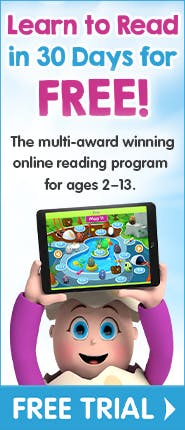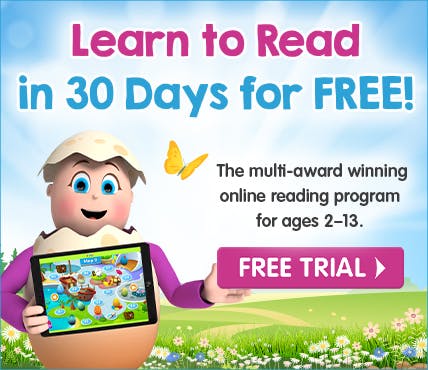


Programs for Reading

Being literate can have an enormous impact on the social and educational life of a child. The importance of literacy remains unquestioned, but the research indicates just how complex the process of learning to read is. Acquiring literacy can be an intricate and difficult process for some children.
While it is easy to assume that kids will just ‘pick up’ reading over time, research has found that that is far from being the case. While some kids may have an easier time of reading than others, no young reader just ‘picks up’ reading. There is a complex set of skills that kids must acquire in order to read and become fluent readers.
The National Reading Panel (2000) conducted extensive research into the most effective reading programs available for young readers. They stated that reading could most certainly be taught very effectively in a systematic way, and that the most effective reading programs use an approach with five areas of emphasis in order to teach kids how to read:
Phonemic awareness
phonics
Fluency
Vocabulary
Text comprehension
Phonemic Awareness
A word is rarely just a single sound. Most words are made up of a number of smaller units of sounds, called phonemes. For instance, the simple word ‘cat’ is made up of three phonemes, /c/a/t/. Phonemic awareness is the ability to hear, identify, and manipulate those individual sounds in spoken words in order to use the phonemes like building blocks to make new words.
Reading Eggs concentrates on phonemic awareness early in the program. Strategies for developing phonemic awareness include structured activities using:
Nursery rhymes
Listening skills
Sound play
Alphabet books.
These lessons engage young readers in activities that help their phonemic awareness to develop and flourish. Later on in the program, readers listen to words in order to discern the lesson’s focus sound, and also work with onsets and rhymes, such as c-at, b-at, r-at, so that they become adept at breaking words into smaller parts. Being able to manipulate phonemes builds phonemic awareness skills, which, when combined with phonics, rapidly increases a student’s bank of readable words.
Phonics
Phonics instruction helps beginning readers to link letters to sounds (phonemes) in order to form letter-sound correspondences and spelling patterns. Children can then use this strategy in their reading, in order to see of how letters and sounds relate.
Reading Eggs uses a synthetic phonics approach with lessons that map individual letters, or letter combinations, with their appropriate sound. Each letter of the alphabet is introduced in its own lesson which reinforces the relationship between letters and sounds. It also draws young readers’ attention to the alphabetic principle, the notion that sounds relate directly to the letters of the alphabet.
Fluency
Fluency enables readers to quickly span the gap between recognizing a word and understanding the meaning. It’s where the magic of reading takes place. Fluent readers spend less time sounding out and decoding words and more time on the meaning of a text. Researchers agree that repetition of reading activities is a very effective strategy for reading more fluently.
The Reading Eggs program uses a range of strategies to teach reading fluency, such as:
Modelling the fluent reading of a book
Re-reading books
Comprehension activities
Vocabulary
Every child approaches reading with differing levels of vocabulary knowledge. Building a child’s bank of known words is a great strategy for improving reading.
The Reading Eggs program offers focused lessons that help build a child’s vocabulary, but also offers lessons in grammar and spelling as well. This not only builds up vocabulary, but also helps kids know how to spell a word and how to use that word properly in a sentence. Instruction in these areas is another way that Reading Eggs offers kids great strategies for reading and writing.
Reading Eggs also accommodates children with a wide range of differing abilities. The program is able to assist readers who may need extra help with vocabulary.
Text Comprehension
In order to comprehend a text, children should be taught how to:
Answer questions about a text
Ask questions of a text
Monitor their own comprehension
Put a jumbled-up text back in order)
Recognize story structure
Reading Eggs offers a systematic program that successfully teaches children to read fluently. Reading and understanding real books is the goal of every Reading Eggs lesson. By the end of Lesson 9 kids read their first e-book, and they continue to read books after every subsequent lesson. Reading Eggs offers a range of interactive lessons that are engaging and child-friendly; it is a reading program that kids love interacting with. The more time spent on-task means kids will quickly advance through the lessons and enjoy greater reading success.
Testimonials
David is on the 9th map and has been learning a lot of words. He can now read books almost all by himself. He was also able to jump up to Kindergarten instead of staying in preschool. David loves Reading Eggs very much and plays on it all the time. We recommend it to everybody.
- Vivian
Hi! I love the Reading Eggs program. I am using it with some of my Kindergarten, Pre Primary [Elementary] and Year One students. They love it!!! Many thanks for your fabulous program.
- Kat


